Advanced Dental Technology
Dental technology has greatly advanced over the years, always moving toward one goal: giving patients better experiences and outcomes. Our dental team at Wheatland Dental uses tools such as the following to diagnose and treat problems.
X-Rays
X-rays are a key dental technology for diagnostic purposes. Also known as dental radiographs, they provide our team a look at the state of your teeth, roots, and jaw. X-rays can help detect issues such as tooth decay and cysts as well as bone loss from periodontal disease. Abscesses and problems with tooth positioning may also come to light thanks to X-rays. Today’s X-ray technology produces relatively little radiation and is considered quite safe.
Dental Cone-Beam Computed Tomography
Dental CBCT can be thought of as an improved X-ray technology. Using an X-ray beam in the shape of a cone, the dental team gathers data points on your mouth from various angles. From those data points, the technology creates a three-dimensional image. This provides a detailed look at the teeth, jaw, and neck.
Typically, it is reserved for situations when other imaging techniques do not suffice. Situations in which CBCT may play a role include jaw evaluations, cleft palate examinations, and preparation for dental implants. If a CBCT procedure is on the table, your dentist can tell you more about the process.
Computer-Aided Design and Computer-Aided Manufacturing
CAD/CAM dental technology is a technology used for planning and producing restorative crowns, veneers, inlays, and bridges. Because the use of computers and advanced manufacturing tools allows for the quick creation of custom materials, CAD/CAM technology can sometimes cut what were once multi-visit obligations down to a single visit. Additionally, in many instances, digital scanning means patients don’t need to produce dental impressions by biting down on a gooey substance called alginate, which some people find uncomfortable. CAD/CAM technology can also reduce costs for patients in some cases.
Intraoral Cameras
Intraoral cameras are a dental technology whose benefits are readily apparent to both dentists and patients. Today’s intraoral cameras are unobtrusive and are able to give dentists a look inside a patient’s mouth by producing high-quality digital images. Like X-rays, they can help detect a range of problems, including soft tissue lesions and broken teeth. Magnification helps dentists spot problems that may otherwise escape the naked eye. Because these images are easy to show to patients, they can help patients in Naperville understand what’s going on in their mouths.
Dental Lasers
Dental lasers can be used for a variety of applications. Common uses of dental lasers include finding cavities, preparing cavities for fillings by killing bacteria, and reducing tooth sensitivity. Through laser treatments, patients may also find relief from cold sores and pain in the temporomandibular joints. Additionally, lasers have proven useful for reshaping gum tissue and correcting restrictive frenulums in children.
Dental Technology and Your Oral Health
Our dentist may have other technological implements at disposal as well. Such tools provide even more benefits when they’re combined with a regular schedule of dental visits and good oral hygiene at home. Contact our office in Naperville today to learn how breakthroughs in dental technology can help with your oral health.

